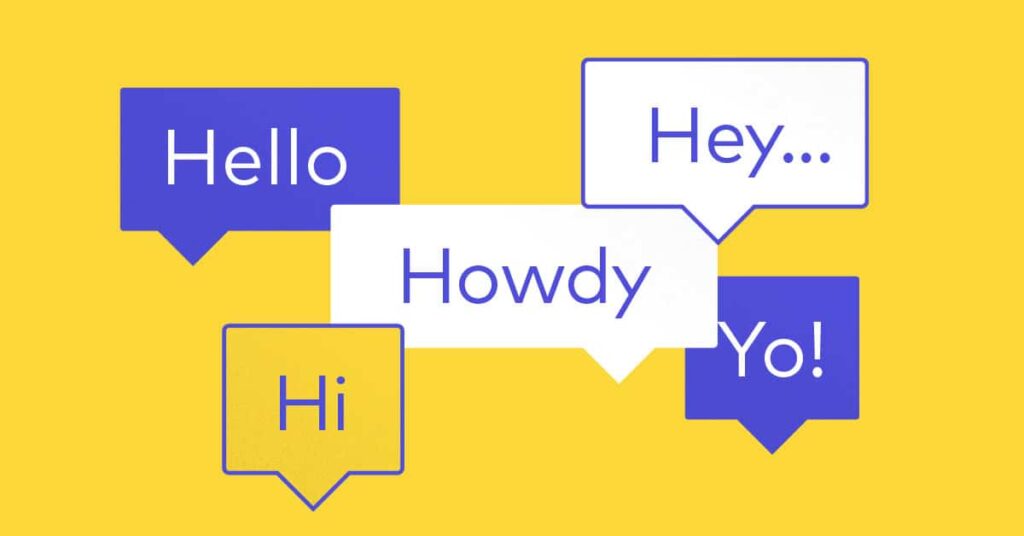3 Easy Steps to Discover Your Unique Brand Tone of Voice

What do M&M’s and Old Spice have in common? They are quirky and fun – we all remember those hilarious and entertaining ads by both brands.
But M&M’s has always been about projecting their witty and entertaining Jester Archetype. Whereas Old Spice had to reinvent themselves to stop losing their market share to the likes of Axe (known as Lynx in Australia, the UK, and other parts of the world) and other big players.
Fading out into a cloud of old grandpa smell, Old Spice recognised that to avoid becoming irrelevant, they needed to target a younger generation.
They have embraced their newfound fun and quirky personality and established a consistent tone of voice to share that personality with the world. Attracting like-minded customers and consumers who resonate with that tone of voice, and regaining new market share in the process.
Ultimately, identifying a unique and relevant tone of voice helps to attract (and keep) customers. And it should be a part of any well-defined brand strategy.
A familiar Tone of Voice builds trust
There is a strong link between familiarity and trust, and this is the reason why we all gravitate towards people that ‘just get us’ and products and services which are easy to understand and use.
Likewise, brands that speak our language, and express values that we share, begin to gain our trust as consumers. Something that feels familiar requires little effort to evaluate and process, and we are more likely to feel at ease around it.
Brands must be consistent in the way they project their personality, the tone of voice, and its use of language so that they become (and remain) familiar to the customer. Creating a unique tone of voice and sticking to it plays a crucial part in this.
What is the difference between tone and personality?
If the voice is your brand’s personality and traits, then the tone is all the different ways you express that personality.
Tone can vary depending on the people you talk to, as well as the situations in which you talk to those people. For example, though you have one personality, you might still speak to a family member differently than you would a neighbour or a government official.
You might also speak to your family members in different ways if they were sad, happy, or frustrated.
The tone of voice is something that needs to be consistent but at the same time malleable so that it can serve you in multiple scenarios.
Step one – It all starts with identifying your customers
This has now become somewhat of a cliche in the branding industry. Everyone talks about defining your target audience. Being clear on who you’re talking to.
As trite as it sounds, it doesn’t make it any less important. Big surprise. People are attracted to and like talking to others who use the same language, share the same beliefs and similar values.
As a brand then, if you are hoping to attract a particular type of customer, you need to get to know them intimately.
Start by understanding your customer’s needs, challenges, desires, motivations, and goals. You can workshop these with a group of stakeholders, using a customer-centric worksheet like this.
You can also validate your assumptions by sending out surveys or interviewing your existing customers. These tools can help verify what challenges they are facing, what they think of your brand or service, and what words they would use to describe their experiences with your brand.
Step two – Crafting your Tone of Voice
Identifying your target market and niche, and working out what challenges you can help them solve is only the first step.
You can reverse engineer the needs of your customers to work out how to talk about your brand.
Let’s say your customers are feeling Frustrated or Uninformed concerning your industry. To solve that challenge you might want to Empower and Educate. As a result, you will adopt a Motivational and Knowledgeable Tone of Voice.
For example, Mailchimp, another witty and entertaining brand, knowing that their customers are bombarded with dry and confusing jargon and lingo all the time use offbeat humor and a conversational voice. And their tone is informal and always clear and entertaining.
Step three – Don’t forget about your own values
If the Customer Needs can help to identify how to talk about your brand and services, your Brand Values help you to identify what to talk about.
To express the brand’s personality accurately, the Tone of Voice needs to embody the Brand Values – the things that drive your brand forward and the reason why you do what you do besides making money.
To start developing a reference guide for your brand, you can distill your Brand Values into a few keywords. These can be adjectives such as strategic, personalised, quirky, or witty. Equally, they can be phrases or word combinations such as imagine, dream becoming a reality, custom creation.
These are words that you can strategically use throughout your copy – in emails you send, the way customer service talks on the phone, the posters you create for your office walls.
More often than not, your Brand Values should be aligned and interlinked with what the Customers Needs are. And this happens naturally when you identify both in tandem as part of your Brand Positioning process.
Now Over To You
How did you find your brand tone and voice? What tools did you use? Are you still asking how and need further assistance? Please reach out via email or on Instagram, I’d love to hear from you!
If you enjoyed reading this article, consider signing up to the Studeo Insider, and receive more insights like this one. If you know someone who might enjoy this article, please share it.
